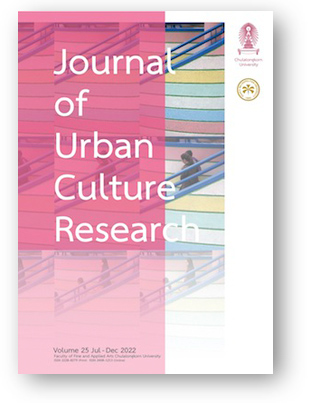Artistic Yarn Portraitures on Streetism in Ghana – Highlighting the Struggles of Street Children
DOI:
https://doi.org/10.14456/jucr.2022.29Keywords:
Textile Art; Techniques; Ordeals; Streetism; Yarn; Ghana; Street ChildrenAbstract
Textile art is widely used by artists to communicate a message. This concept simply employs materials and techniques unconventionally to produce works of art that strives to gain the attention of viewers.This project exercised the concept where yarns of different textures were used in the production of works of art that falls in the ambits of textile art. These works communicate the emotional state and ordeals street children undergo on the streets of Kumasi. The philosophical underpinnings of each textile art seeks to draw the attention of citizens about the struggle of these children in our society and support to minimize their increasing numbers. In achieving the focus of the project, a conceptual framework influenced by Marshall (2010), Aesthetico-action model was developed coupled with art Studio-Based practice. Participant observation and unstructured interview were the instruments employed in the creative process. Experiments conducted under studio-settings revealed the working possibilities of materials and techniques. It was revealed that, adhesives such as uhu glue, super adesivo and Fevico SH adhere well with yarns (cotton, acrylic and polyester) depending on which yarn pattern technique used. The study however recommended strict regulation and implementation of policies on streetism that seeks to eliminate children on the streets.
Downloads
Published
Versions
- 2023-01-13 (2)
- 2022-12-20 (1)
How to Cite
Issue
Section
License

This work is licensed under a Creative Commons Attribution-NonCommercial-NoDerivatives 4.0 International License.
Authors authorize the JUCR to publish their materials both in print and online while retaining their full individual copyright. The copyright of JUCR volumes is retained by Chulalongkorn University.
The views and opinions expressed herein are those of the individual author(s) and do not necessarily reflect the policies or opinions of the Journal (JUCR), it editors and staff, Chulalongkorn University, or Osaka Metropolitan University.








